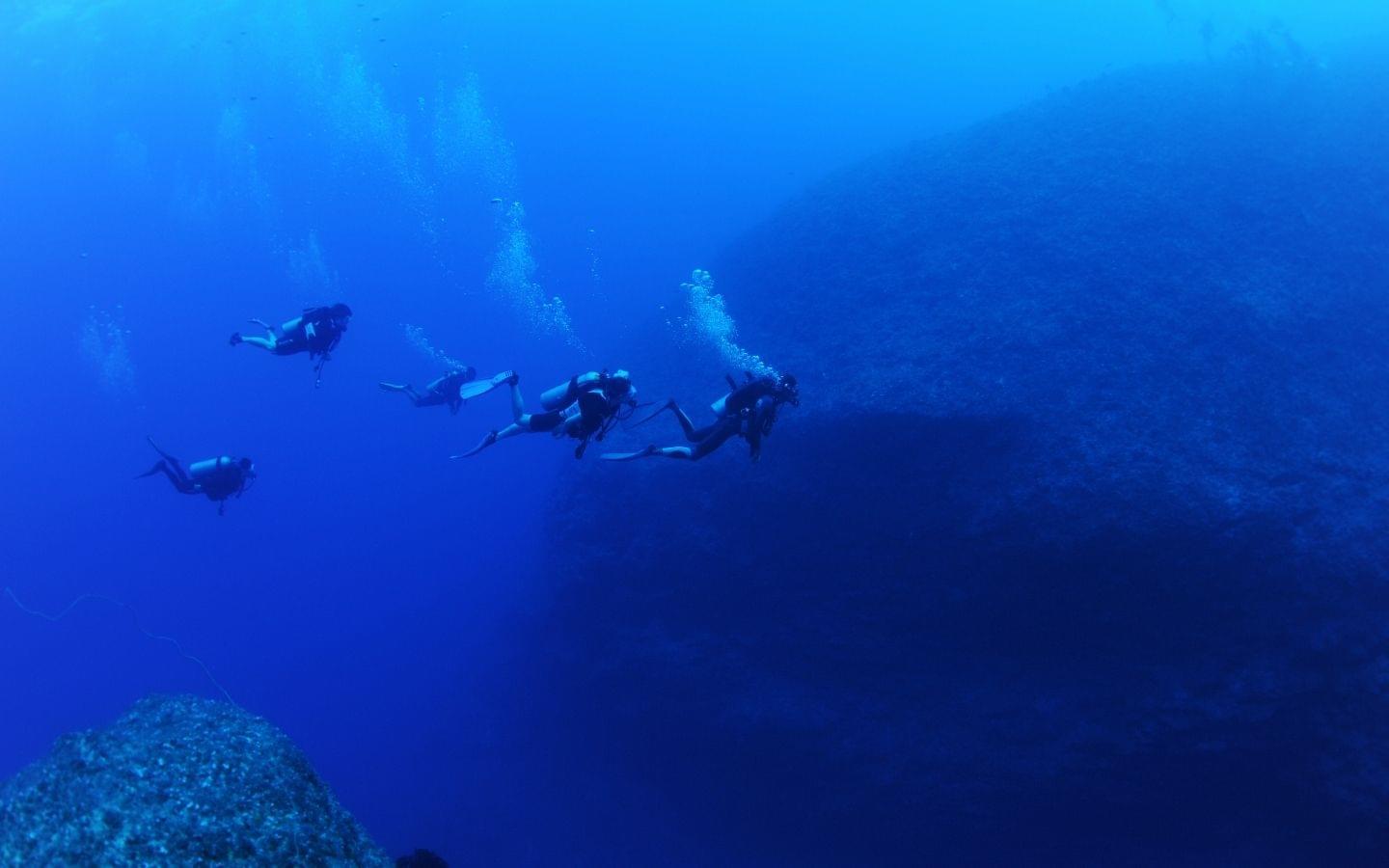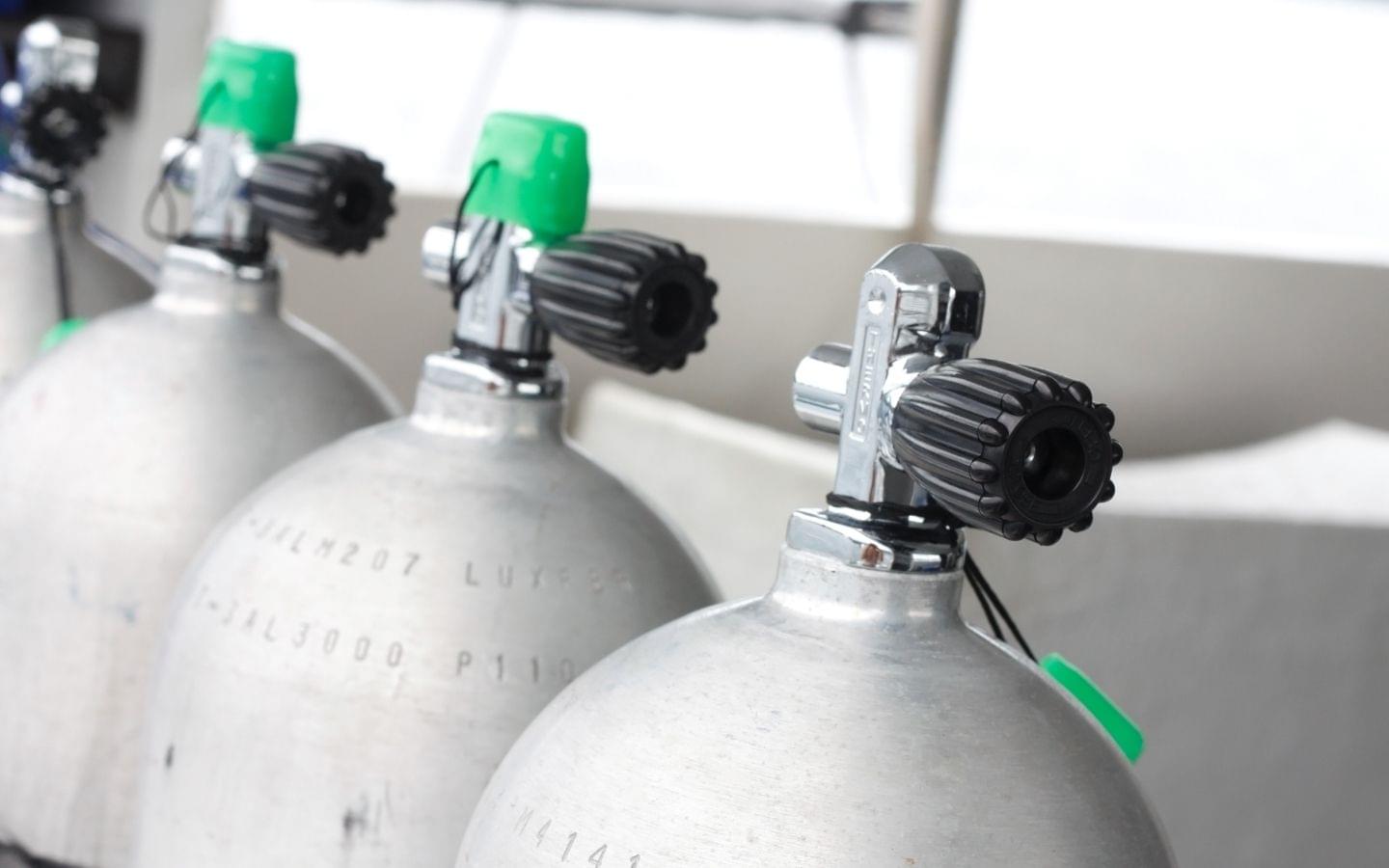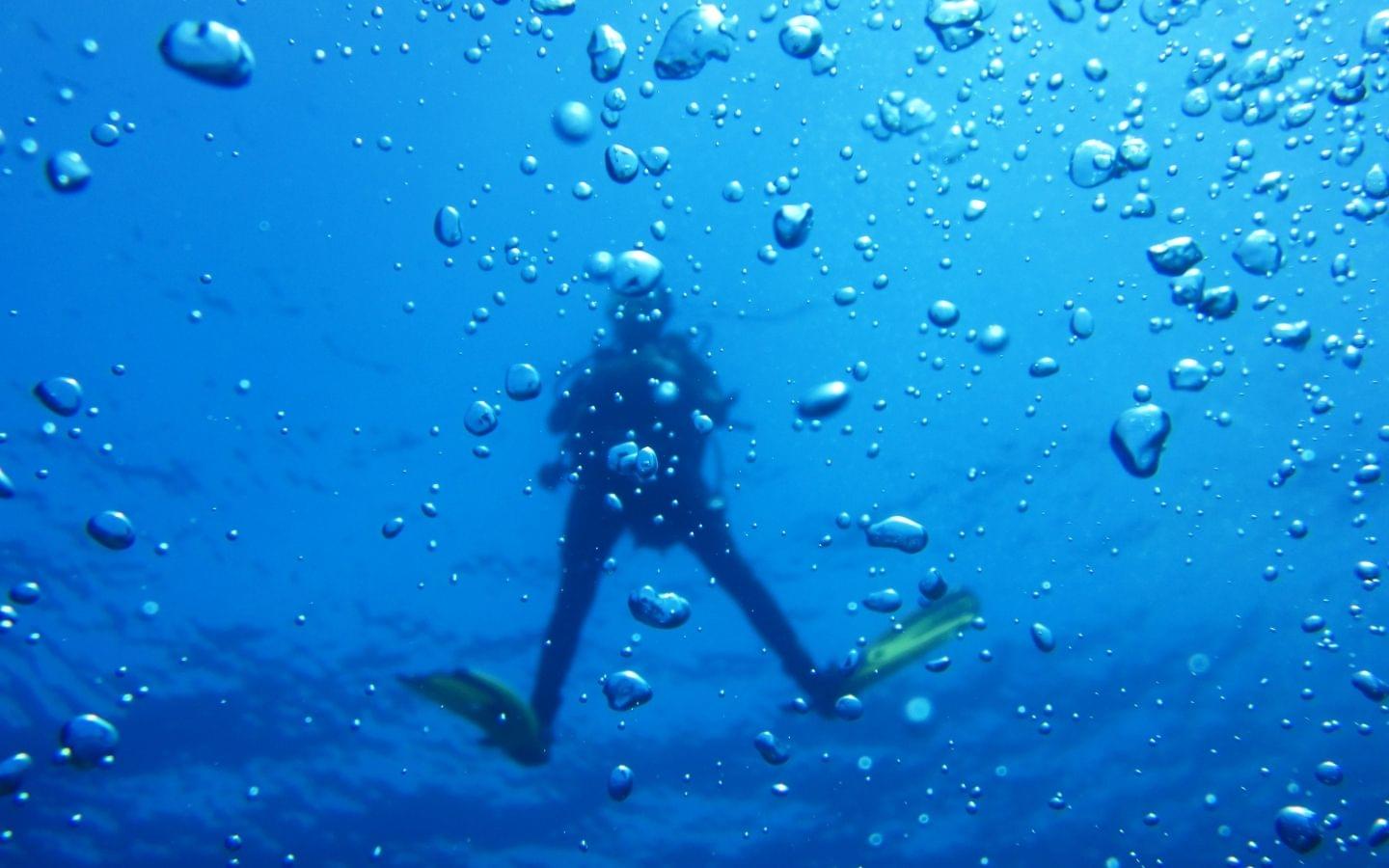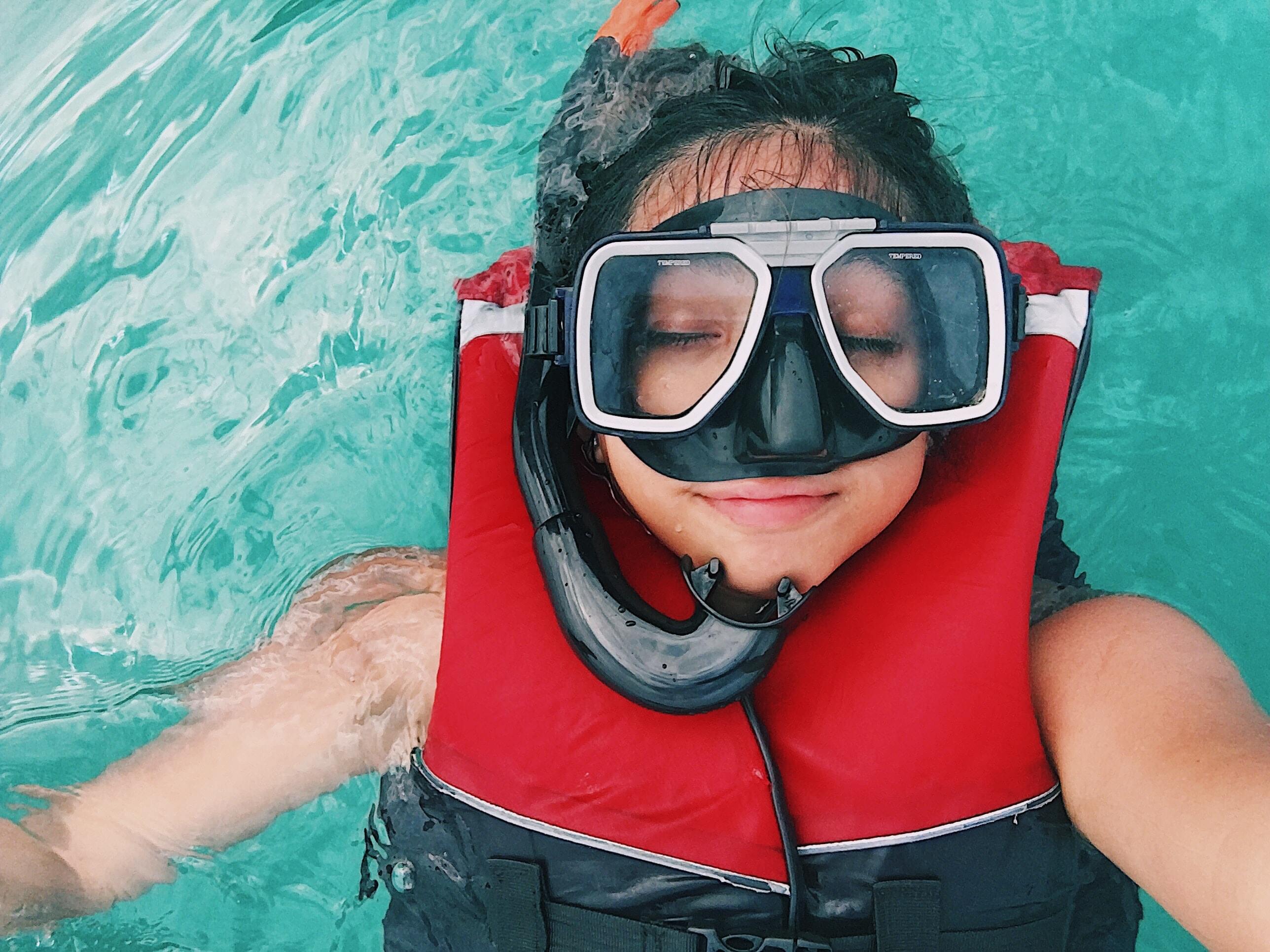Flying after scuba diving: Why you should wait
Exposure to high elevations after scuba diving can lead to decompression sickness. However, by following surface interval guidelines and planning your trip you can prevent these risks and keep scuba diving before or after flying safe.
When planning a scuba diving trip, it is important to plan your flights around your dives. Flying too soon can lead to serious health complications. Before you make any bookings, know the number of dives, the type of dives, and the end time of your last dive.
Flying after diving increases your chance of developing Decompression Sickness (DCS). Dive professionals recommend waiting 12 hours after a single dive and 17 hours after repetitive dives. After multiple dive days or a decompression dive, you must wait 24 hours before flying (1).

What is DCS
Most recreational divers breathe a set mixture of oxygen and nitrogen in their tanks. As your body uses the oxygen, the nitrogen dissolves into your bloodstream. During your ascension and surface interval, this nitrogen naturally leaves your body. This takes time and some will stay in your blood as tiny bubbles after your dive.
When there is a rapid decrease in pressure these bubbles will expand in your blood. This happens either from ascending too fast in the water or moving to a high elevation. The expansion of these bubbles blocks your blood flow and leads to serious health complications (2).
Many divers refer to DCS as the bends, and it’s one of the more dangerous aspects of diving. However, it is rare and proper diving procedures will prevent it (3).
When ascending in the water divers must do so at a rate of one foot every two seconds and complete decompression stops. Once on the boat or land, they need to time their surface intervals as they off-gas the excess nitrogen. This includes surface intervals after your last dive. It is important to wait before moving to an elevation above sea level so that nitrogen has time to leave your body.
The most common DCS symptoms are joint pain, headache, skin rash, and extreme fatigue. Some of these symptoms can last for days or weeks after your last scuba dive.
Treatment involves breathing 100% oxygen in a hyperbaric chamber for a few hours. This reverses atmospheric pressure changes and allows the nitrogen to leave the body. Some factors that lead to DCS are being over 30, being female, use of alcohol or tobacco, and fatigue (2).

Flying before and after diving
It is generally considered safe to fly before scuba diving and many people will plan high elevation activities in the days before a dive. These include arrival flights, skydiving, and high elevation hikes.
The riskiest of these are long flights that cause dehydration and fatigue. These increase your risks of developing DCS during or after a dive (1). The Divers Alert Network (DAN) advises waiting at least 12 hours between a long flight and your first dive. However, if you don’t meet this timeline, most dive shops will still let you go diving. If you have a long arrival flight, it is best to get plenty of rest and eat well before your first dive.
When you fly too soon after scuba diving, your chances of developing DCS are very high. This is due to the rapid increase in cabin altitude and the height of most commercial flights. The safest precaution is to wait a full 24 hours before flying (1). Even hiking or driving to high elevations is a risk and divers should stay at sea level as long as possible.
If you can’t wait 24 hours before flying, DAN has determined the minimum preflight surface intervals needed to avoid DCS. They developed these regulations based on various scientific studies and expert recommendations. Most dive professionals and agencies such as PADI follow these as well.
Surface intervals according to dives
- Single no decompression dive - 12 hours
- Multiple no-decompression dives in one day - 17 hours
- Multiple days of diving or a single decompression dive - 24 hours
These times are important because DCS is unpredictable and can develop without notice. Often divers have very small bubbles in their system but don’t show any symptoms while on land (4). These can later expand and cause problems during a flight.
Divers also process nitrogen at different rates based on age, weight, and overall health.
One study tested nitrogen levels in scuba divers during a multi-day dive trip. They found some divers never developed bubbles while their peers developed them at different rates. Those with high levels of residual nitrogen still had bubbles after a 24-hour surface interval (5).
Because DCS is hard to predict it is best to wait for as much time as possible before flying. If you have a heart defect, you are at higher risk and should wait 24 hours after any dive (2).

Preventing DCS
Dive computers
Along with the regulations, many divers rely on their dive computers to know when it’s safe to fly. These are usually worn like a watch or attached to your SPG. Personal computers keep track of all your dives and calculate surface interval times. They will also determine your no-decompression limits (NDLs) while diving. This lets you avoid the risk of DCS, decompression dives, and the need for more safety stops. On land dive computers will tell you when you can dive again and your no-fly times.
If you don’t have a dive computer, shops include it in their gear rental. These dive computers will tell you the same information about surface intervals and NDLs. If you are renting, make sure you use the same computer on every dive during your trip. Using different computers will give you inaccurate calculations.
Determining when it is safe to fly with rented computers is difficult. Once returned to the shop, you will lose access to your dive information and need to rely on written calculations. For this reason, divers who often travel invest in their own dive computer.
Without a computer, use the DAN guidelines or wait 24 hours after your last dive.
Enriched Air Nitrox
The only way to reduce the chance of getting DSC is by diving with different mixtures of air. The easiest way to do this is with the Enriched Air Nitrox (EANx) course. This course teaches you to dive with higher levels of oxygen and lower levels of nitrogen. This means your body absorbs less nitrogen while diving, requiring shorter surface intervals.
The main benefit of using an EANx tank is decreasing your NDLs, giving you longer dive times. You can complete these courses in one day and only need an Open Water certification (6).
Diving with enriched air is growing in popularity, but it’s important to be aware it has its own risks. The air mixtures increase your chance of oxygen toxicity while slightly decreasing the chance of getting DCS (3). Only authorized dive shops can teach EANx to guarantee you are using the proper air mixture. Most of the course focuses on the safety precautions needed to use EANx.
Many scuba diving instructors choose to get certified in EANx. Learn what it takes to become a dive professional in our article here.
Conclusion
Air travel too soon after diving puts you at risk of DCS. This is a serious condition caused by rapid ascension during or after diving. Also referred to as the bends, it’s best known for causing joint pain due to nitrogen bubbles in the blood.
Following DAN’s guidelines will help prevent the development of DCS and serious health conditions. When possible, wait a full 24 hours before flying or going above sea level. Using a dive computer or EANx air are two ways you can protect yourself from developing DCS.
References
-
Flying after Diving. _DAN
-
(January,2019).Decompression Sickness. Harvard Health Publishing. https://www.health.harvard.edu/a_to_z/decompression-sickness-a-to-z#:~:text=Decompression%20sickness%2C%20also%20called%20generalized,altitude%20or%20unpressurized%20air%20travel.
-
Richardson D. and Shreeves K. ‘An Overview of the PADI Enriched Air Diver Program and Associated DSAT Oxygen Exposure Limits’, DAN Nitrox Workshop Proceedings 2000;44-56. Http://citeseerx.ist.psu.edu/viewdoc/download?doi=10.1.1.732.8121&rep=rep1&type=pdf#page=50
-
Ljubkovic M. et al. ‘Venous and Arterial Bubbles at Rest After No-Decompression Dives’, 43(6): Medicine & Science in Sports & Exercise 2011; 990-995. https://journals.lww.com/acsm-msse/Fulltext/2011/06000/Venous_and_Arterial_Bubbles_at_Rest_after.9.aspx
-
Cialoni D. et al. ‘Flying after diving: should recommendations be reviewed? In-flight echocardiographic study in bubble-prone and bubble-resistant divers’, (45), Diving and Hyperbaric Medicine 2015; 10-15. https://www.dhmjournal.com/images/Journals/45/DHM_Vol45_No1.pdf#page=12
-
Enriched Air Diver. PADI. https://www.padi.com/courses/enriched-air-diver
Last updated 17 October 2024




